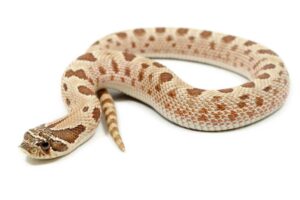Foxes have been known to have the ability to adapt to various challenging situations due to their ingenuity and agility.
However, it is hard to imagine an animal from the Canidae (dog family) as a tree climber.
This is because most members of this particular family lack the physical features that would enable them to climb trees. However, over time, foxes have undergone physical evolution that has made them exceptional tree climbers.
For instance, they have firm forelegs, potent hind legs, flexible ankles, camouflage skin, and semi-retractable claws.

Table of Contents
Features That Make Foxes Good Tree Climbers
Besides being stealthy and super intelligent, foxes have strong bodies that are perfectly built for climbing trees. The following are features that make foxes such good climbers.
Firm Forelegs
While they are comparatively small, foxes’ forelegs are super-mighty. The strength of these limbs makes it possible for these animals to maintain balance when going up a tree.
They also enable the animals to maneuver at a fast pace between branches without falling.
Semi-Retractable Claws
This is perhaps the most essential physical feature that a fox climbing a tree should possess. Semi-retractable claws allow foxes to firmly establish their grip on a tree, giving them the support they need to scale up a tree.
With this characteristic, they are able to dig into the bark of a given tree and launch themselves off the ground.
Powerful Hind Legs
Most members of the dog family opt to wait for their prey at the foot of a tree instead of chasing after it. This is because they cannot properly launch themselves off the ground and onto the tree to hunt and kill their targets.
On the other hand, foxes have powerful hind legs that allow them to spring off the ground and move swiftly up a tree.
In addition to this, these incredible hind legs enable them to have accurate landings between branches while up in the tree.
Flexible Ankles
Agility is a necessity when you are chasing prey or running from a predator. Foxes possess flexible ankles that permit them to swiftly shift directions when they are navigating the branches of a tree.
This feature also aids foxes to latch their semi-retractable claws on the tree trunk and branches at the right angle.
Camouflage Fur
A predator that is able to disguise itself while hunting has an easy time catching unsuspecting prey. This is true for foxes, whose coat’s color often matches the color of the tree, making the animals difficult to spot.
For instance, when the trees have changed color during fall, the amber of a red fox’s coat becomes undisguisable. Their camouflaging characteristic also protects them from predators.
Why Do Foxes Climb Trees?
One of the reasons foxes climb trees is to hunt for food. Foxes love to feed on small birds, their eggs, and fledglings, which are mostly found up in the trees. These make easy prey for foxes as they can be snatched from their nests without much ado.
Moreover, other small animals like squirrels tend to lounge on trees, and their young ones make easy prey for a hungry tree-climbing fox.
Additionally, foxes climb trees to keep a safe distance from their predators, such as wolves and hunting dogs. Neither of these predators can climb trees, so it is a full-proof escape plan.
Furthermore, their fur keeps them unnoticeable, so foxes tend to be safe on the trees.
Another reason foxes like to climb trees is to rest. Just like other members of the dog family, foxes love to take long and peaceful naps during the day, and what better place to do it than the top of a tree?
Not only is it peaceful up there, but it is also a safe distance from any potential threat by predators.
Can All Foxes Climb Trees?
Not all foxes possess the physical abilities to climb trees. In fact, only gray foxes have been identified as skilled tree climbers in the dog family.
Although there has been strong speculation that red foxes can climb trees with the same ease as a gray fox, experts claim that this is not entirely true.
Red foxes can hunt animals in trees whose branches are close to the ground. Like most of the members of the dog family, they have the ability to jump at impressive levels and can therefore snatch their prey from inclining branches or trunks.

Thus, red foxes can comfortably climb specific trees, like the eucalyptus. This is because this particular tree has sloped branches, making it easier for red foxes to climb.
When it comes to trees without low-hanging/sloping branches, red foxes are not always able to scale them successfully.
They can launch themselves off the ground and climb a few meters up, but they cannot reach the branches to hide, hunt or rest like the gray fox.
One of the reasons why gray foxes tend to be better tree climbers is that they are relatively lightweight. While an adult red fox can weigh up to 14 kg, adult gray foxes only grow to 3.8 kg.
Therefore, red foxes find it a little harder to spring off the ground to climb vertical trees.
Can Foxes Get Inside Your Backyard?
Foxes are as good at climbing fences as they are at climbing trees. They are well-adapted to jump over your fence and infiltrate your backyard easily.
Thus, foxes have been known to be frequent visitors of gardens and yards. While some manage to leave no trace of their trespassing, others are not as stealthy.
So, why would a fox trespass into your property?
There is a variety of reasons why this small member of the dog family would make its way into your backyard.
The main reasons include hunting for food, casually stopping over during their hunting expedition, searching for a good hiding spot, and easy infiltration.
Foxes also tend to play with certain items that happen to have been abandoned in the backyard. In particular, Fox cubs are extremely playful animals who consider strewn toys and tools as an invitation to play.
Usually, these animals do not stay long unless food is abundant in your yard. Also, they are pretty harmless and are unlikely to hurt you or your pets.
As they are smart, they know to run off when confronted by a human as they are aware that they are outmatched and will lose in an altercation.
How To Tell That a Fox Was in Your Backyard
If you live near a forest, then you have probably had a lot of unwanted animals in your backyard. Thus, it may not be easy for you to distinguish which one has inflicted particular damage in your yard.
However, there are distinct signs that indicate that a fox, or foxes, has been in your yard.
Signs that a fox has been in your backyard include small paw prints, like a dog’s but smaller. You will also likely find small holes in your yard, as well as damaged plants and flowerbeds.

A fox will also chew on toys and tools that are lying in the backyard, so that is a sure sign.
Moreover, you may also come across the remains of prey that the fox had been devouring. If your yard is attractive enough, the fox might just make it its haven and come by more often than you would care for.
How Can You Keep Foxes Off Your Backyard?
There are several measures a person can take to wade away foxes. It is important that an individual pinpoints the reason why a fox is infiltrating their backyard in the first place.
Once you do this, you can come up with a feasible strategy on how to get rid of the foxes in your backyard. The following are measures you can take.
Use of Repellents
Two types of repellents can be applied; visible and invisible. Visible repellents include predators such as a large, ferocious dog to scare off the trespasser or a sprinkler to discourage the fox from approaching the property.
Invisible repellents are also effective in ridding foxes from your backyard, but they only work when they are applied continuously.
Close the Access Points to Your Backyard
If you assess your backyard and find holes within your fence or that your barrier is easily accessible, do repairs and replace your fence.
As mentioned earlier, foxes infiltrate backyards that have easy entry points. Making it difficult for them to enter will deter them from getting into your backyard.
Clean Your Backyard
Foxes scout for places to build their dens, and if your backyard happens to be hospitable to them, they will settle there.
Therefore, make a point of getting rid of wild vegetation, tall grass, and piles of wood. This way, your yard will be less appealing to foxes looking for den spots.
Remove All Attractive Features
Ensure that anything that can draw a fox to your backyard is hidden or disposed of. Food and water are the two most appealing things to a fox. If you have formed a habit of leaving food out for your pets, keep them inside the house.
Also, drain your pool/pond as a strategy to keep thirsty foxes away. Moreover, any chewable item should be kept away. It is also essential to avoid fertilizers that smell like food, more so those that contain fish, blood, and ground-up bone.
More importantly, remember to house all pets and livestock that are small in stature in inaccessible structures.
Seek Professional Help
If you feel ill-equipped to deal with a group of foxes, contact the local animal control unit near your area.
Through them, you will be able to know the safety measures that you can apply when engaging with a fox family and the guidelines that are present pertaining to the trapping of foxes.
Final Thoughts
While foxes belong in the dog family, they share many physical traits with cats that enable them to climb trees easily. These features include strong front legs, powerful limbs, semi-retractable claws, flexible ankles, and camouflage fur.
Foxes climb trees for three main reasons: to hunt, escape predators, and rest.
Foxes can also climb fences and can easily access your backyard. While they are quite harmless, foxes can cause damage to your plants and small pets.
This article outlines ways you can safely and successfully wade off foxes if they infiltrate your backyard.










